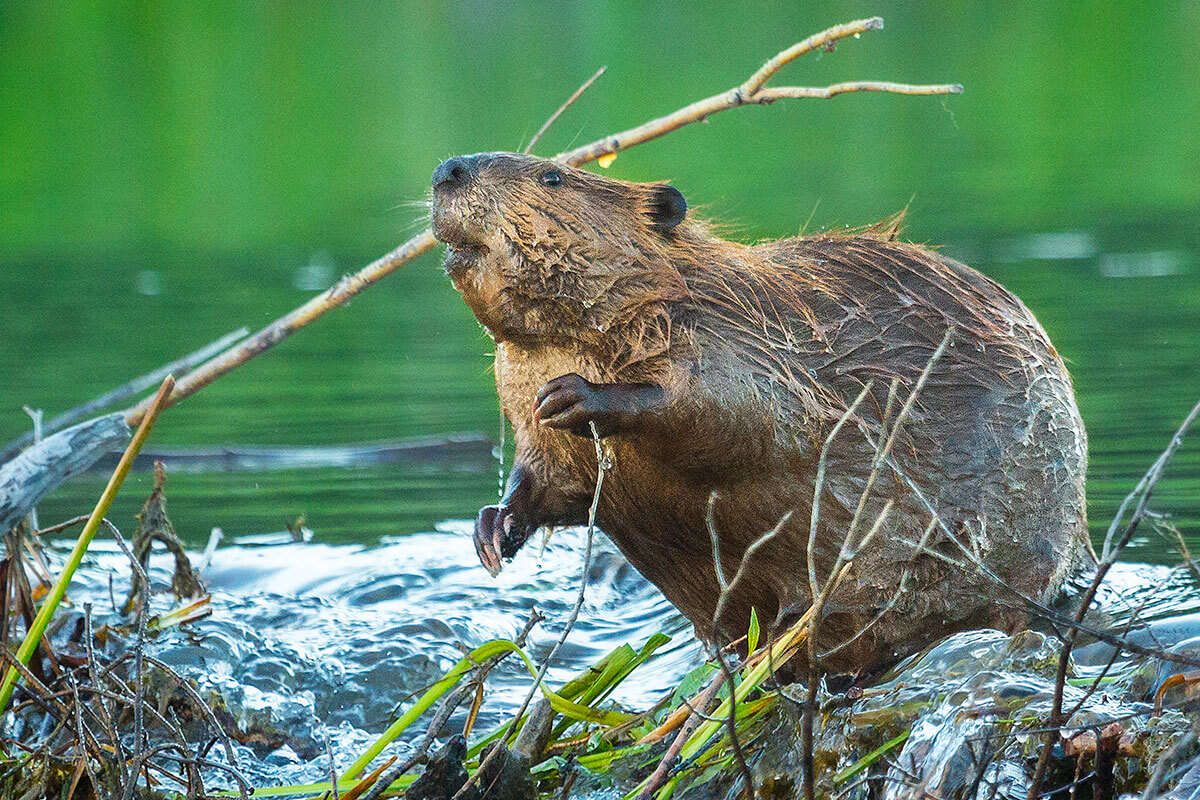North American Beavers

The North American beaver is native to Canada, much of the United States and parts of northern Mexico.
Beavers are herbivores, and prefer the inner bark of aspen and poplar trees, but will also take birch, maple, willow, alder, black cherry, red oak, beech, ash, hornbeam and occasionally pine and spruce. They will also eat cattails, water lilies and other aquatic vegetation, especially in the early spring. Contrary to widespread belief, they do not eat fish.
Beavers are often trapped for their fur. During the early 19th century, trapping eliminated this animal from large portions of its original range. Beaver furs were used to make clothing and top hats. Much of the early exploration of North America was driven by the quest for this animal’s fur. Native peoples and early settlers also ate this animal’s meat. Through trap and transfer and habitat conservation, beavers made a nearly complete recovery by the 1940s. The current beaver population has been estimated to be 10 to 15 million; one estimate claims that there may at one time have been as many as 60 million beavers located in North America.
Beavers are known for their natural trait of building dams on rivers and streams, and building their homes (or ‘lodges’) in the resulting pond. Beavers may also create a series of dams along a river. Dams serve as protection against predators such as coyotes, wolves and bears, and provide easy access to food during the winter months. Beavers always work at night and are prolific builders, carrying mud and stones with their forepaws and timber between their teeth.
They also build canals to float building materials that are difficult to haul over land. They use powerful front teeth to cut trees and other plants that they use both for building and for food. In the absence of existing ponds, beavers must construct dams before building their lodges. First, they place vertical poles, then fill between the poles with a crisscross of horizontally-placed branches. They fill in the gaps between the branches with a combination of weeds and mud until the dam backs up sufficient water to surround the lodge.
When startled or frightened, a swimming beaver will sound the alarm, by rapidly diving while forcefully slapping the water with its broad tail, the sound of which being audible over great distances above and below water. This serves as a warning to beavers in the area. Once a beaver has sounded the alarm, nearby beavers will dive and may not reemerge for some time. Beavers are slow on land, but are good swimmers, and can stay under water for as long as 15 minutes.
Beavers do not hibernate, but store sticks and logs in a pile in their ponds, eating the underbark. Some of the pile is generally above water and accumulates snow in the winter. This insulation of snow often keeps the water from freezing in and around the food pile, providing a location where beavers can breathe when outside their lodge.
Beavers have webbed hind feet, and a broad, scaly tail. They have poor eyesight, but keen senses of hearing, smell and touch. A beaver’s teeth grow continuously so they will not be worn down by chewing on wood. Beavers continue to grow throughout their lives. Adult specimens weighing over 55 pounds (25 kg) are not uncommon. Females are as large as or larger than males of the same age, which is uncommon among other mammals. Beavers live up to 24 years of age in the wild.
Source: en.wikipedia.org/wiki/Beaver/
